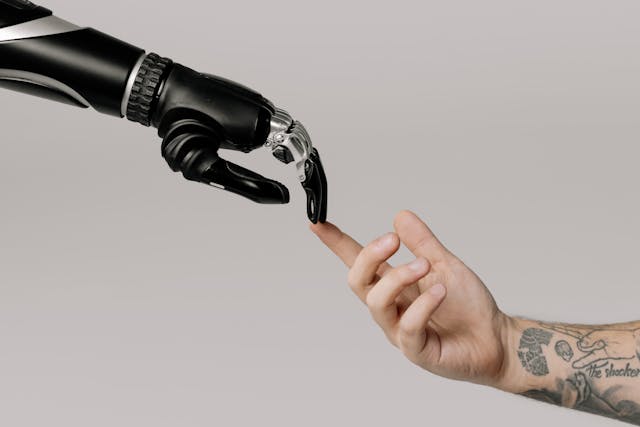AI isn’t going to replace “everyone.” That’s the wrong headline. What AI will do is separate workers into two categories:
- People who use AI to multiply output
- People who still work at human speed
And that gap — not AI itself — is what will decide who gets hired, promoted, outsourced, or replaced.
What Is the AI Productivity Gap?
Productivity used to be limited by:
- time
- effort
- ability
- energy
- memory
AI removes all five.
So two people with the same job title are no longer equals:
| Manual Worker | AI-Powered Worker |
|---|---|
| Writes email in 12 min | Generates email in 12 sec |
| Researches for 2 hours | Gets AI summary in 30 sec |
| Edits video in 3 hours | AI auto-edits in 6 min |
| Creates 1 blog per week | Creates 4–6 per week with AI help |
| Starts from zero every time | Starts from templates, workflows, prompts |
Same role. Same title. Completely different output.
That’s the gap employers will notice.
The Real Risk Isn’t “AI Taking Your Job” — It’s Another Human Using AI Taking Your Job
Companies won’t say:
“We fired three people because AI did the job.”
They will say:
“We kept the one who used AI and let the others go.”
Because businesses don’t keep workers based on effort — they keep workers based on leverage.
What Becomes the New Definition of a “Skilled Worker”?
Before: task ability Now: task + tool ability
Skill is no longer: “Can you do this?” Skill is: “Can you do this 10× faster without needing help?”
The workplace will divide into:
- People who use AI
- People who are used by systems that replaced them
Why This Will Feel Unfair
Because the gap has nothing to do with:
- age
- education
- years of experience
- job title
- loyalty to the company
The only variable is:
“Did you adapt, or did you wait?”
AI doesn’t reward seniority. It rewards **speed of adoption.**
What Workers Who Fall Behind Will Say
❌ “I don’t have time to learn new tools.” ✅ That’s why you’ll be replaced by someone who did.
❌ “I’ve been doing this job for 10 years.” ✅ AI does not care. Employers care about cost and speed.
❌ “AI can’t replace human creativity.” ✅ True — but it can replace humans who use creativity slowly.
❌ “This is just a trend.” ✅ So was the internet. So was email. So were smartphones.
The New Rule of Career Survival
AI doesn’t replace workers. AI replaces workers who refuse to use it.
Once that shift hits hiring cycles, CVs won’t be screened for “experience” first — they will be screened for:
- Which AI tools you’ve adopted
- How much output you can create per hour
- How many tasks you automated instead of performed
- Whether you can work without being micromanaged
Where This Gap Is Showing Up First
- Marketing teams: 1-person AI-powered teams replacing 4-person content teams
- Agencies: fewer retainers, more automation-led deliverables
- Startups: hiring “AI-literate” roles instead of “junior roles”
- Admin jobs: 40–60% already being automated into CRMs + agents
- Remote jobs: companies prefer “self-automators,” not “self-starters”
The same thing will move to HR, sales, finance, legal, customer support, etc.
Want to Track Which Roles Will Be Safe vs Automated?
Live breakdowns of AI hiring shifts, salary changes, and job-risk categories are being published on creator economy + work transformation insights.
Final Thought
The real question isn’t:
“Will AI take my job?”
The real question is:
“Will someone who uses AI make me unnecessary?”
There will always be work. But not for people who work like it’s 2018.
The productivity gap is here. And it’s widening every month.
